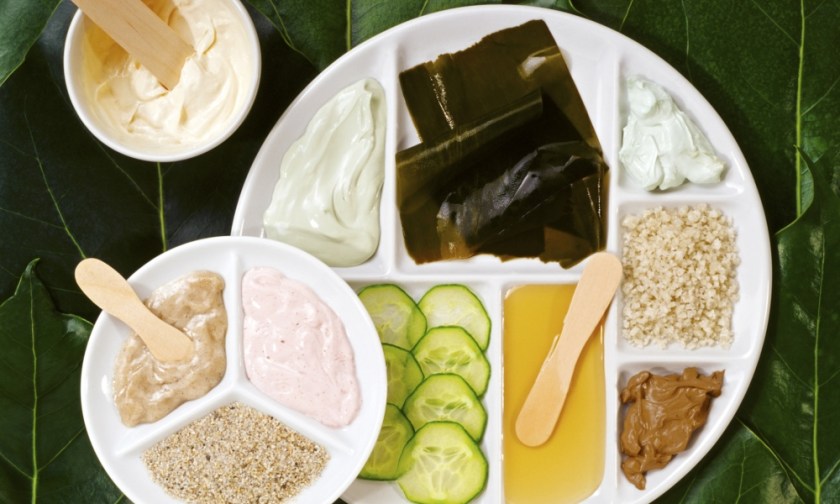If you were invited to apply the following chemical cocktail to your skin. If you were prepared to put this concoction on your skin, would you also be prepared to eat it:
WATER (75%), SUGARS (12%) GLUCOSE (48%), FRUCTOSE (40%), SUCROSE (2%), MALTOSE (<1%), STARCH (5%), FIBRE (3%), (E460, E461, E452, E464, E456, E467) AMINO ACIDS (GLUTAMIC ACID (19%), ASPARTIC ACID (15%), HISTONE (11%), LEUCINE (7%), LYSINE (5%), PHENALALANINE (4%), ARGININE (4%), VALINE (4%), ALANINE (4%), SERINE (4%), GLYCINE (3%), THREONINE (3%), ISOLEUCINE (3%), PROLINE (3%), TRYPTOPHAN (1%), CYSTINE (1%), TYROSINE (1%), METHONINE (1%)), FATTY ACIDS (1%) (PALMITIC ACID (30%), OMEGA-3 FATTY ACID, LINOLEIC ACID (14%), PALMITOLEIC ACID (3%), STEARIC ACID (2%), LAURIC ACID (1%), MYRISTIC ACID (1%), CAPRIC ACID (<1%), ASH (<1%), PHYTOSTEROLS, COLALIC ACID, E300, E306 (TOCOPHEROL), PHYLLOQUINONE, THIAMIN, COLOURS (YELLOW-ORANGE E101) (RIBOFLAVIN), YELLOW-BROWN e160a), FLAVOURS (ETHYL HEXANOATE, ETHYL BUTONOATE, 3-METHYLBUT-1-YLETHANNOATE, PENTYL ACETATE), E1510, ETHENE GAS.
Me? Why not, after all it’s not all that sinister. It’s just the chemical composition of a banana.
That’s right chemicals; the building blocks of the world around us. And yet it appears that these are the binary choices that confront us – Chemical v Natural, Active v Botanical, Cosmeceutical v Aromatherapy. The oxymoronic nature of these either-or options never cease to amuse me.
My passion behind creating the Waterlily formulations is an embrace of how the individual chemical constituents of botanical ingredients interact with the skin at a cellular level.
But who wants natural if it’s ineffective?
Organic and natural skincare should be meticulously formulated to meet fundamental core criteria:
- The most effective botanical ingredients known to combat the signs of premature ageing in boosted concentrations to maximise results.
- The purest or organic form of the ingredient to assure integrity.
The aesthetics industry is approaching a crossroads where consumers are being asked to exclusively choose between remedial cosmeceutical ranges or natural organic alternatives.
Neither of these options will give long term results if the right combination of the right ingredients are not present in the right concentrations.
The way we group brands is misleading consumers. We are asking the wrong questions.
What’s the point of choosing a certified organic product, if 90 percent of the formulation is water and the remaining ingredients have no remedial function? Or finding a cosmeceutical product where the only outcome is aggressive exfoliation, devoid of the skin-replenishing essential fatty acids and biochemically active nutrients necessary to protect skin and prevent ageing?
So what exactly should we be asking of our skincare? I think it’s this:
What is the percentage of active ingredients in our cosmetics?
A formulation rich in water and mineral oil or petrochemicals, apart from potentially harming skin, is a complete waste of money.
These ingredients are, at best, lazy. They lack nutrition and are the opportunity cost of using ingredients that deliver transdermal benefits to the skin.
Mineral oils have the added drawback of congesting and irritating the skin. You’d be amazed at the number of expensive luxury skincare brands still using mineral oil as a base ingredient.
Does the product use synthetic ingredients and fillers?
The one cardinal rule of skincare is that for ingredients to be effective they need to be:
- Transdermal – small enough to penetrate the skin deep enough to effect the formation of newly forming cells.
- Biochemically compatible – made from organic matter that our bodies can recognise, accept and metabolise.
- Nutritionally rich in antioxidants, phytosterols, vitamins, carotenes, minerals, enzymes, amino acids and a range of essential fatty acids – elements all necessary for hydration, collagen synthesis, reducing inflammation, fighting the effects of photo damage and cellular regeneration and repair.
Even patented synthetic compounds touted by cosmetic companies as ground-breaking ingredients look like a basic child’s drawing compared to the intricate complexity of the chemical compounds naturally found in plants. Alas, it’s not possible to patent a compound and inflate its price if nature has already slaved over its creation.
What is the order of active ingredients on the label listing?
Like food ingredients, cosmetics are required to be listed from largest to smallest in volume on the label. With mainstream commercial formulations the preservative is generally around 3-5 percent (*). If active ingredients are listed after the preservative, what benefit is there for your skin in these much smaller quantities? I generally find there is more colour and fragrance in supermarket cosmetics than beneficial ingredients.
The first ingredients within a label listing should be either water-soluble plant, fruit or herbal infusions (found in lighter cr””mes and lotions) or omega-rich essential fatty acid cold-pressed oils (the base of richer cr””mes and treatments).
How active are the actives?
Some plant oils are great for creating slip on the skin (macadamia and soya bean) but for complex anti-ageing treatments we should be targeting rich omega oils like blackcurrant, pomegranate seed and rosehip.
Those super food oils are rich in omegas 3 through to 9. There needs to be congruency between the product’s claim and the effectiveness of the ingredients used in the formulation.
Another example in skincare is the use of collagen. Adding collagen to preparations does not build collagen in the skin.
The only reason it is (or should be) included in any formulation is for its hydrating effect. Collagen can hold up to seven times its weight in water.
Is the product oil free?
Yikes, I hope not! Our skin is made up of a waterproof layer. Every cell in our body has a membrane composed of a phospholipid bi-layer (a double wall of oils, fats and lipids).
So what ingredient do you think skin demands to penetrate this waterproof layer? What ingredient is necessary to repair and rejuvenate skin at a cellular level? OIL!
But not any old oil; it needs to be plant-based, biochemically compatible and structurally small enough to be transdermal.
Cold-pressed plant oils are not only nutrient rich sources in their own right, they provide a lipid delivery system for water soluble actives, vitamins and therapeutic essential oils.
An oil-free product simply means skin is going to lack the cofactors vital for repair and rejuvenation while compromising the pH-causing sensitivity and inflammation. All precursors to premature ageing – not exactly an appealing skincare goal!
The industry is still finding its way. We need to use clearer messages in advertising and provide a forum for consumers to engage with cosmetic companies. We need to be smart about our skincare choices.
In the meantime, everything is a chemical. The question we need to be asking is who is creating them.
My money is still on my favourite biochemist: Ms Mother Nature.




